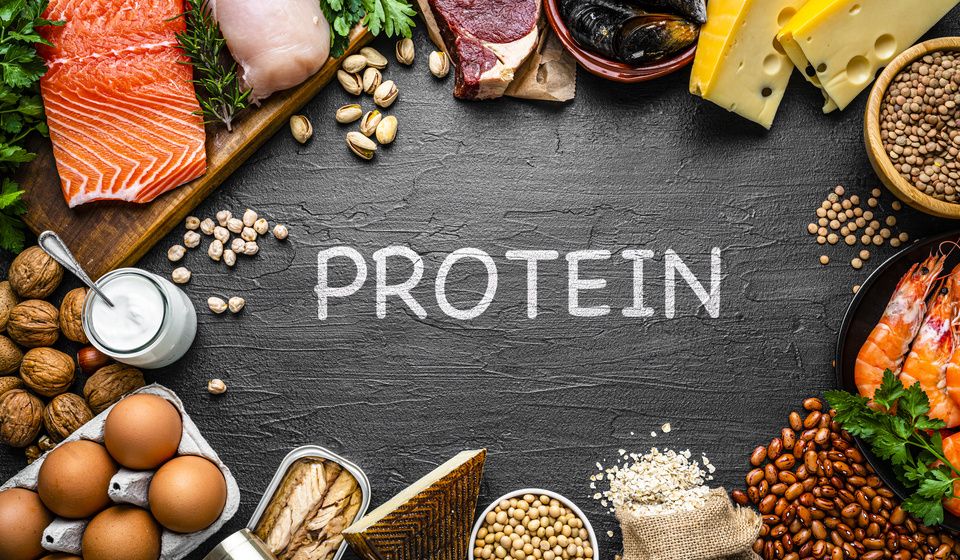Blood Sugar, Cortisol, and the Brain: Healing the Sugar Addiction Cycle
Ali Segersten May 02, 2025
Your body has exquisite detoxification systems—your liver, kidneys, lymph, gut, and even skin are constantly working to eliminate what you no longer need.
But those systems can’t function optimally when they’re overwhelmed by sugar, alcohol, pesticides, plastics, and synthetic chemicals.
Remove what burdens the body and replenish what nourishes.
This is the guiding principle in functional medicine and behind the "remove and replace" phase in our 12 Gifts of Health journey this year. Month 5 is about removing dietary and environmental toxins—a sacred pause in which we clear space for healing by gently and intentionally removing the substances that burden our bodies. And at the top of that list? Refined sugar.
When you remove sugar (and other dietary toxins), you reduce inflammation, calm the nervous system, rebalance the gut, and free up your mitochondria to create more energy. Only then can you fully receive the healing power of the detox-supportive foods we’ll explore next—like cruciferous vegetables, berries, citrus, magnesium, and more.
Letting go of sugar is one of the most powerful detoxification steps you can take. But it's also one of the hardest.
Because sugar isn’t just a food—it’s a fix. It soothes, stimulates, distracts. It creates a predictable reward in the brain. It gives a false sense of safety when we feel overwhelmed or depleted. So when you’ve tried to quit and "failed," know this: you weren’t weak. You were hooked into a biochemical and emotional loop designed to keep you coming back.
And that’s what we’re here to break.
Sugar and the Brain: A Dopamine Loop That’s Hard to Escape
Sugar activates the brain’s reward system by triggering the release of dopamine—a neurotransmitter that gives you a sense of pleasure, comfort, and satisfaction. But with repeated exposure, this reward pathway begins to dull. You need more sugar to get the same effect. This process, known as dopamine downregulation, is at the core of habit formation and addiction.
That’s why cutting sugar feels like losing a lifeline—because for many, it is. Especially when sugar has become a primary way to self-soothe after stress, trauma, or burnout.
To heal, we don’t just need to remove sugar—we need to rewire the brain. This means creating new, nourishing sensory inputs that provide safety, predictability, and satisfaction—new restorative foods that nourish and balance the nervous system.
As we explored in How to Leave the Known and Rewire Your Brain for Lasting Change, true transformation happens when you let go of the familiar—even if it was hurting you—and step into a new version of yourself.
Why Stress Makes You Crave Sugar and How to Stop the Cycle
When blood sugar drops—whether from skipping meals, eating high-sugar foods that cause a spike-then-crash effect, or simply running on stress—your body kicks into survival mode. Cortisol, your primary stress hormone, rises in response. Its job is to keep you safe: mobilizing glucose from liver stores to provide quick energy for a perceived threat.
But when stress is constant, cortisol becomes a daily driver. This keeps blood sugar elevated, can lead to the development of insulin resistance, and traps you in a loop of sugar cravings and crashes.
This is why sugar isn’t just a willpower issue—it’s a biochemical response to an imbalanced system. Eating nutrient-dense meals rich in protein, fiber, and healthy fats helps stabilize blood sugar and calm the cortisol response. These foods send signals of safety to your nervous system and nourishment to your cells. When your blood sugar stays steady, your body doesn’t have to rely on cortisol for energy, and your cravings begin to fade.
Over time, this gentle recalibration reduces inflammation, supports insulin sensitivity, calms the nervous system, and builds a foundation of sustainable energy—so you can show up for your life feeling grounded, resilient, and whole.
Key Connections to Remember:
- Low blood sugar triggers cortisol to raise glucose levels for quick energy.
- Chronic stress overstimulates cortisol, which can lead to the development of insulin resistance and unstable blood sugar.
- This biochemical chaos can lead to irritability, fatigue, and intense sugar cravings.
- Nutrient-dense meals (protein, fat, fiber) help regulate blood sugar and calm the nervous system.
- Steady blood sugar supports hormonal balance and reduces the urge to reach for sugar.
Sugar, Gut Health, and Chronic Inflammation
From a functional nutrition standpoint, excessive sugar intake is one of the most biologically disruptive factors in the modern diet. Here's how:
1. Disruption of Gut Microbiota and Increased Intestinal Permeability
High sugar consumption alters the gut microbiota, leading to dysbiosis. This microbial imbalance weakens the intestinal lining, increasing permeability ("leaky gut") and allowing inflammatory toxins like lipopolysaccharides (LPS) to enter the bloodstream, triggering systemic inflammation.
2. Impact on Cognitive Function
Sugar-related inflammation and mitochondrial dysfunction can contribute to brain fog, fatigue, anxiety, and cognitive decline.
3. The Nutrient Connection: Why Magnesium, Chromium, B1, and B6 Matter
Sugar depletes essential nutrients your body needs for blood sugar regulation and insulin sensitivity:
- Magnesium helps insulin bind to its receptor and plays a key role in transporting glucose into cells. Low magnesium means cells stop listening to insulin, driving insulin resistance.
- Chromium enhances insulin signaling by increasing receptor sensitivity and glucose uptake into cells—without enough, blood sugar stays elevated longer.
- Vitamin B1 (thiamin) supports mitochondrial glucose metabolism. A deficiency can impair energy production.
- Vitamin B6 (pyridoxine) is required for enzymes involved in processes that helps stabilize blood sugar, especially during times of stress or fasting. In its active form, (pyridoxal 5'-phosphate) B6 also supports neurotransmitter production that affects mood, cravings, and appetite regulation. It is especially vital for the synthesis of GABA, a calming neurotransmitter that reduces stress-induced sugar cravings by quieting the nervous system. Without enough B6, this conversion is impaired—leading to low GABA levels and increased excitability, anxiety, and food cravings, especially for sugar.
4. Promotion of Systemic Inflammation
Sugar activates inflammatory pathways, increasing inflammatory cytokines. This chronic low-grade inflammation underlies many conditions: cardiovascular disease, metabolic dysfunction, autoimmune issues, and mood disorders.
Blood sugar spikes initiate a cascade of inflammatory and metabolic disruptions:
- Oxidative stress: Blood sugar spikes generate ROS, damaging cells and triggering immune activation.
- NF-κB activation: This transcription factor turns on genes for pro-inflammatory cytokines—flooding the system with inflammatory signals.
- Cytokine-induced insulin resistance: Pro-inflammatory cytokines reduce insulin sensitivity, keeping blood sugar elevated, worsening inflammation.
- Advanced glycation end products (AGEs): Chronic hyperglycemia (high blood sugar) forms AGEs. Endothelial cells see them as threats and release more cytokines, deepening vascular inflammation, and reducing insulin sensitivity even further.
The Vicious Cycle
Inflammation, nutrient depletion, and dysbiosis impair metabolism and neurotransmitter function—increasing cravings and perpetuating the very cycle they create.
This is the root of the vicious cycle: Sugar → Inflammation → Insulin Resistance → More Sugar → More Damage.
It silently disrupts healing, drains energy, and keeps you stuck in craving-mode.
But there's a way out.
How to Cut Out Sugar—And Stop Craving It
Sugar cravings are real, and they often hit hardest when your blood sugar is crashing, your stress is high, or your meals aren’t meeting your true nutritional needs. Here’s how to shift your biology so sugar no longer controls you:
1. Start Your Day with Protein, Fiber, and Fat
A breakfast filled with these three macronutrients is one of the most effective ways to stabilize blood sugar, reduce mid-morning energy crashes, and prevent late-afternoon sugar binges. Think pasture-raised eggs with sautéed greens, turkey-zucchini hash with avocado, chia pudding with berries and nut butter, or a smoothie with hemp seeds, greens, berries, and avocado.
When your blood sugar is steady, your brain doesn't beg for a quick fix—and that’s the beginning of breaking the cycle.
2. Incorporate Intermittent Fasting Mindfully
Occasional fasting (when appropriate for your constitution) can improve metabolic flexibility—the ability to switch between burning sugar and burning fat for energy. It also activates autophagy, a natural cellular “cleanup” process that helps eliminate damaged proteins and toxins, reduce inflammation, and reset your taste for sweetness. Fasting can actually recalibrate your relationship with food—making you more sensitive to true hunger and less dependent on constant stimulation. However, it’s best to avoid starting a fasting practice until you’ve replenished key nutrients, stabilized your cortisol levels, and are no longer living in a state of chronic stress.
3. Retrain Your Taste Buds
After just 7 to 10 days without refined sugar, your palate begins to change. Natural whole foods start tasting sweeter. Fruit becomes a treat. Over time, sugar-laden foods may even taste too sweet or artificial—your body’s way of saying: “I remember how real nourishment feels.”
4. Use Natural Sweeteners in Moderation
When you do bake or sweeten a dish, use small amounts of unrefined sweeteners that still contain trace minerals and antioxidants—such as pure maple syrup, raw honey, coconut sugar, or date paste. And by using less, you continue the process of reducing your need for intensity in flavor.
5. Add in Key Micronutrients
Replenishing nutrients like magnesium (chelated form), chromium, vitamin B1, and B6 (active form called P5P) is essential for blood sugar regulation and insulin sensitivity. These micronutrients help restore energy production, calm cravings, and support hormonal balance—laying the groundwork for sustainable healing from the inside out.

Breaking the Cycle: A Return to Wholeness
By now, you can see that it’s all connected.
Chronic stress raises cortisol, which raises blood sugar. Elevated blood sugar triggers inflammatory cytokines, reducing insulin sensitivity. A high sugar diet feeds harmful gut bacteria, damages the gut lining, and forms AGEs—which your body treats as a threat, triggering even more inflammation.
All of this creates a vicious biochemical loop: the more stressed and inflamed your body becomes, the more it craves sugar to feel better. But the sugar only makes things worse.
This is not a failure of willpower. It’s a predictable survival response from a wise body trying to protect you.
The good news? You can break the cycle.
Not through deprivation—but through recalibration.
When you remove sugar and nourish your body with protein, fiber, healthy fats, and micronutrients like magnesium, chromium, B1, and B6, you begin to restore hormonal balance. You stabilize blood sugar. You calm cortisol. You reduce inflammation at the root. You retrain your taste buds and reawaken your body’s natural intelligence.
This isn’t just about cutting sugar—it’s about coming home to your body’s natural state of clarity, vitality, and inner calm.
It’s about stepping off the blood sugar rollercoaster and walking your path to wholeness—one nourishing choice at a time.
Ready to Go Deeper? Choose a Food Plan that Supports Blood Sugar Balance
If you're ready to take the next step and reset your system, explore one of our targeted food plans designed to curb sugar cravings, deeply nourish your body, and stabilize energy:
- The 8-Day Cleanse: A short-term anti-inflammatory reset that removes sugar and common triggers, offering clarity and renewed energy from the inside out.
- The IFM Mito Food Plan: A science-based plan designed to support mitochondrial function, reduce fatigue, and optimize blood sugar using therapeutic, nutrient-dense foods.
- The Low-Carb Diet: A sustainable, blood sugar–stabilizing plan that calms inflammation, reduces cravings, and supports long-term metabolic health.
- The Sugar-Free Diet: A clean, deeply healing approach that removes all forms of added sugar to retrain your palate, rebalance your mood, and restore energy.
- The Anti-Inflammatory Diet: A gentle, whole-food approach that removes common immune-triggering foods and includes small amounts of natural sweeteners to help ease the transition from processed foods to deeply nourishing, anti-inflammatory meals.
If you’re ready to create new patterns of nourishment—on your plate and in your life—our Nourishing Meals® membership is here to walk with you.

About the Author
Alissa Segersten, MS, CN
Alissa Segersten, MS, CN, is the founder of Nourishing Meals®, an online meal-planning membership with over 1,800 nourishing recipes and tools to support dietary change and better health. As a functional nutritionist, professional recipe developer, and author of The Whole Life Nutrition Cookbook, Nourishing Meals, and co-author of The Elimination Diet, she helps people overcome health challenges through food. A mother of five, Alissa understands the importance of creating nutrient-dense meals for the whole family. Rooted in science and deep nourishment, her work makes healthy eating accessible, empowering thousands to transform their well-being through food.Nourishing Meals Newsletter
Email updates.






Add Comment